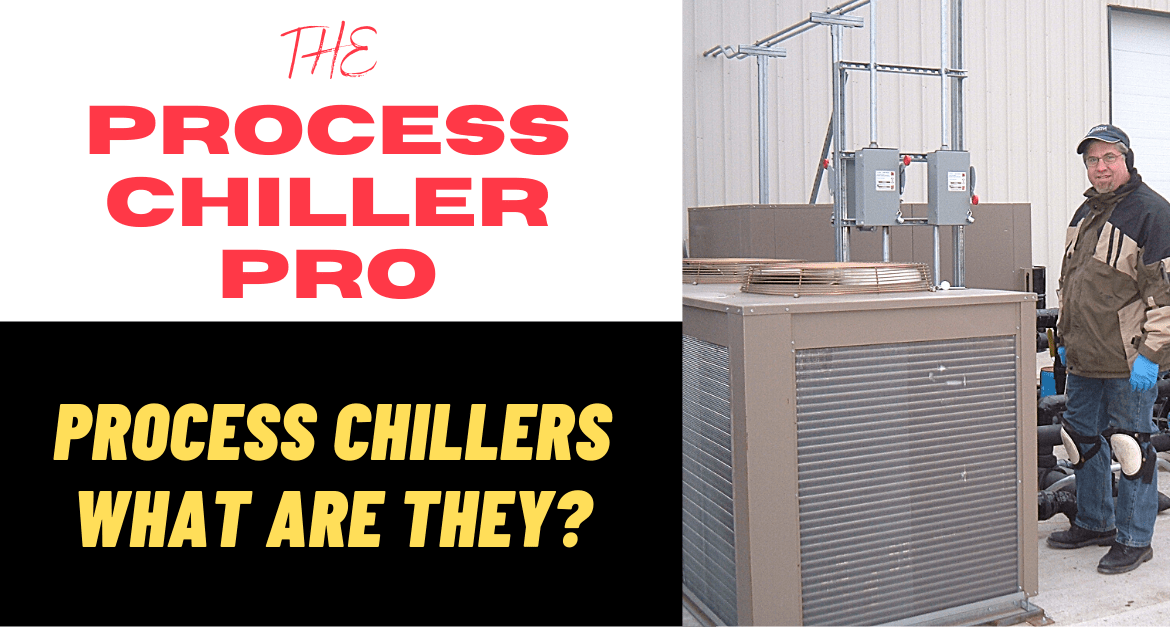Video of this Episode
On the Road?
Listen to AUDIO ONLY
version of the Podcast
Follow the Process Chiller Pro podcast on these platforms.
Listening on your phone or mobile device? These great podcast platforms may require apps to be installed to access the podcast on your mobile devices.
Get an email alert when new episodes are posted.
Episode Transcript
0:08
So I had a life lesson not too long ago, a couple buddies of mine, we get together every year to do a hunting trip. And we’re looking for elk and deer. And I was up in western Idaho in your town called seagull. So we get on RVs. And we kind of compile over at one of the guys houses that lives there. He’s got a nice piece of property. And anyway, so one night, we had a problem where this young guy John, who was new to our little group, he was running around one of the RV is trying to figure out why couldn’t get the microwave to work, right. So, of course, me being me, you know, I’m trying to help out. So I grabbed my Leatherman, and I go over there and I say, Hey, what’s up? He says, Wow, the power went out. I can’t get the microwave going. Right. So I’m like, okay, so I made the assumption that we had to do something inside the RV. Because, you know, I figured, in the back of my mind, he must have checked the 30 amp plug, right. So I’m going around, and I’m looking at breakers and looking for fuses. And I find underneath one of the chairs in the seating area around the table, that there’s a bunch of screws there. And it’s actually behind the breaker panel. And I figure, you know, there’s got to be a fuse in here somewhere. So I’m about halfway through taking this thing apart. And one of the other guy’s name is His name is Bud. Nice guy. So he’s, he’s basically on the outside of the RV looking in the window, because we had the window open. And he says, Hey, did you guys check the 30 amp plug out here? Because it looks like it’s, it’s almost almost all the way out of the plug. I’m, I’m like, Oh, man. No, I didn’t check that I just made the assumption that John checked it, right. So he says, Okay, well hold on. So it goes over, plugs it in, boom, everything lights up, everything starts working again. And the lesson that I learned was, you got to make sure that you question everything. When you’re going into troubleshooting situation, you got to start with the basics. And that was the mistake I made. And that’s typical for guys who’ve been around a long time, you have a tendency to make assumptions about things. And I made it a few assumptions that ended up you know, wasting 15 minutes of my life. But the worst part of it is, is these guys have known these guys for years. And I can just hear it now. Next time. We’re in hunting camp next year. He’s gonna say, Well, looks like we got the chiller pro here today. Too bad. He’s not a plug Pro, stuff like that. So anyway, just my learning experience. Make sure you check the basics out there. Are you going to get chastised by your friends for sure.
2:58
So I get asked from time to time what a process chiller is. Now, it annoys people when I do this, but a lot of times when I get a question like that, I’ll turn it around or who asked it and say, Well, what do you think it is? And I’m really amazed on the responses that I get. Some people think the large tonnage and critical chillers are process chillers, although they can be other people think that any chiller that’s running glycol is a process chiller. Also partially true. And it just amazes me. So what I’m trying to do today, guys, is I want to dispel with the mysteries about what a process chiller is, I’m going to do some comparisons to some terrific goals and really give you guys an idea on what you’re dealing with here. Now, my hope is that if you’re a technician or a business owner out there, I’m going to increase your comfort level with the whole subject. Because there’s huge opportunities out there in the process. Chiller world, I talk to business owners and you know, if you’re doing air conditioning, only, your business tends to be a little bit seasonal. And process chillers just like maintenance contracts can be a really great way of smoothing out your business and making sure that you keep your good techs busy all year round. So it’s just another opportunity for technicians. It’s also good to Expand your horizon a little bit, you know, same thing, right so if you’re a residential commercial HVAC tech, and you know you’re running maintenance, you’re doing you know services on those types of systems, you have these walls during the year. And if you have a special skill, it’ll certainly make you more in demand and create your opportunity base. So that’s kind of the idea of it. For business owners, I want to go back to them for a minute if you’re you know, in a situation where you have a customer and this happened to me, this is kind of how I got in the chiller business to start with. You have a commercial customer and let’s say you do the air conditioning maintenance on some kind of a hospital or medical clinic or imaging center or whatever. And you know, you get a phone call and say hey, you know you’re doing the air conditioning on my building. Do you think maybe you could take a look at my chiller because my MRIs down, right? So first instinct, your muscle memory might say, that’s not something that I do. And the downside to that whole thing is he may go to one of your competitors, that does chillers as well as air conditioning. And let’s face it, a lot of building owners want to consolidate their services and limit the number of contractors they deal with. So you may have a missed opportunity and potentially down the road, a lost customer, it does happen. So I want to increase your comfort level with what process chillers are and then I’m going to share with you a little segue into some future content that I’m going to be putting out there in the area of process chillers to make you guys pros.
5:50
Let’s look at this graphic here. Now, if you’re watching the video, you’re in great shape, if you happen to be listening to the podcast, there’s still gonna be a lot of good stuff in here. So when you get a minute, pop over and take a look at the video version at process chiller. academy.com Just click on the blog vlog and you’ll see all of the video versions of the episodes in there. Alright, so this graphic here is showing a centrifugal chiller. This is a large tonnage, centrifugal chiller, these typically run from 100 times on up, you know, they’re used for all kinds of stuff. Now, these are specifically designed in most cases, there’s exceptions to every rule, I want to point that out there, but these are used primarily for comfort cooling. So if you have a large campus, where you have a central mechanical building, and you have a ton of satellite, outbuildings, this is the type of children that you would expect to see a high rise whether it be office building, or high density residential, very popular, mainly what these why these are so popular with mechanical engineers, is that you have a lot of flexibility in design, meaning that you can have control high levels of control over the fluid going out to your air handlers, you can also transport that cooling medium along way without having to run ductwork obviously, across the campus right, it’s easier to send the fluid out through a pipe distributed within a building off to all the air handlers pick up all the heat energy and then bring it on back to the chiller. So that’s what these are specifically designed to do. Now, there are instances where facilities will use a very, very small portion of the fluid coming off of a centrifugal chiller like this for a process. But it’s not real common and the reason why is because the leaving temperature going out of one of these chillers is typically between 43 and 45 degrees, that’s their sweet spot and processes which we’ll get into in a minute, they typically can vary a lot as to what type of what I call approach temperature approach means the fluid leaving the chiller going to the process so they’ll have approach temperatures, it’ll be all over the place. Now you can do some amazing things using secondary heat exchangers. I’ve got customers that did that where you use the building 43 to 45 and let’s say you have a process that has a requirement for say 70 degrees approach temperature to the process, you can put in a secondary heat exchanger that is doable however it’s not practical in a lot of cases and we can get into that if you guys have questions how to do that. But typically that’s that’s not a real common application for one of these chillers right. These are very, very narrow bandwidth to what you can do with the refrigeration side the cooling medium pressures and flows right so but they have their they have their market
9:01
This episode is brought to you by GMD chillers. If you find yourself in need of a process chiller, check out GND at GE D chillers.com. Or better yet give Andy or Paul a call over there 800-555-0973 Any and Paul are my go to guys over at GND whenever I get approached by resellers and users even OEMs looking for a quality chiller to be designed and built for him. So check them out. If you do call them make sure use promo code chiller pro so they know how you find out about them. Jean de chiller I love their tagline it goes big enough to produce and small enough to care and that’s definitely the truth out there for sure. So again called G and D chillers. Ask for Andy or Paul 800-555-0973 or check them out online at G D chillers.com. So let’s flip over to process chillers for a minute. And unlike a centrifugal that’s designed for a fairly narrow bandwidth of market opportunities, process chillers are built specifically for whatever their cooling. So for example, if you have a brewery distillery winery, something like that they all use chillers typically. And the chillers that they use will be specifically designed for the approach temperatures that they need go into the process, the temperatures as well as the flow requirements. So you have a small brewery, for example, they may have just a few tanks. So you’ll need fluid temperatures, sometimes slightly above freezing, sometimes colder, sometimes warmer. And let’s say they want to expand, they go from just a couple of tanks up to 50 tanks, right that they expand over the years, you need to make sure that that process chiller expands along with it or chillers, right, you’ll be able to add to it. So the concept is is that the the design of the refrigeration system and the design of the fluid dynamics, need to match whatever the requirements are the processes. On the other side of the spectrum, which I was just talking about cold. There’s also warmer sides. So you have specialty applications like MRIs, CTS, CTS, linear accelerators for cancer therapy, lasers, you name it, there’s a lot of high tech applications, semiconductor testers, things like that. They can’t tolerate typically anything colder than usually 50 to 55 degrees. In those applications, mainly the processes are located inside, they want to keep the fluid going to these processes above the dew point. And you guys are technicians know what I’m talking about. If you have a pipe that’s running 4045, and you’ve got an exposed piece of material, a piece of pipe, what does it do? It starts to sweat, right? So you typically on a high end process, you’re going to run your fluid approach temperatures above the dew point 5560 65 In order to keep that the potential for condensate down. So that’s a big difference. In these warmer temperatures again require a specific design of the chillers refrigeration system, that’s compressor, evaporator condenser metering, device selection, special controls a lot of times to be able to service that process effectively. Alright, so that’s the differences between the larger tonnage and tricycles and a process duty chiller. In future episodes, we’re going to really get into what process chillers are about, we’re going to be talking about the refrigeration systems, we’ll be looking at, you know, package split, we’re gonna look at the different types of components that you have within these applications. I’m also going to be talking in detail about control architectures, pumping requirements, and things like that. So we’re gonna get into what’s going on inside these machines. And my whole goal, as I mentioned before, is I want to make you guys proficient at understanding what these systems do, and how to properly address the customer’s needs. And just take good care of them. Right. And I think you’ll find that your horizons as far as keeping busy all year round, and expanding your opportunity venue is going to be just amazing. Before you take off i and you’re happy to be looking this on the video, I would encourage you to click on the right hand side of the screen that you’re on and leave a message. If there’s anything I left out or anything that you’d like me to further embellish on. Definitely give me your feedback because again, I said before these episodes are all about you guys. Also on the video page, you can scroll down a little bit in you will see that there’s a form to fill out to get email alerts. So when that when we drop a new episode of the process children pro podcast, you’ll get an email letting you know that it’s available with a quick link to it. So thanks for stopping in. I appreciate it. Let’s keep the conversation going. connect up with me on LinkedIn or leave comments. I’m always around or at the end of this video here. You’ll see my email address don’t hesitate to reach out to me. Take care and we’ll see you again soon.




